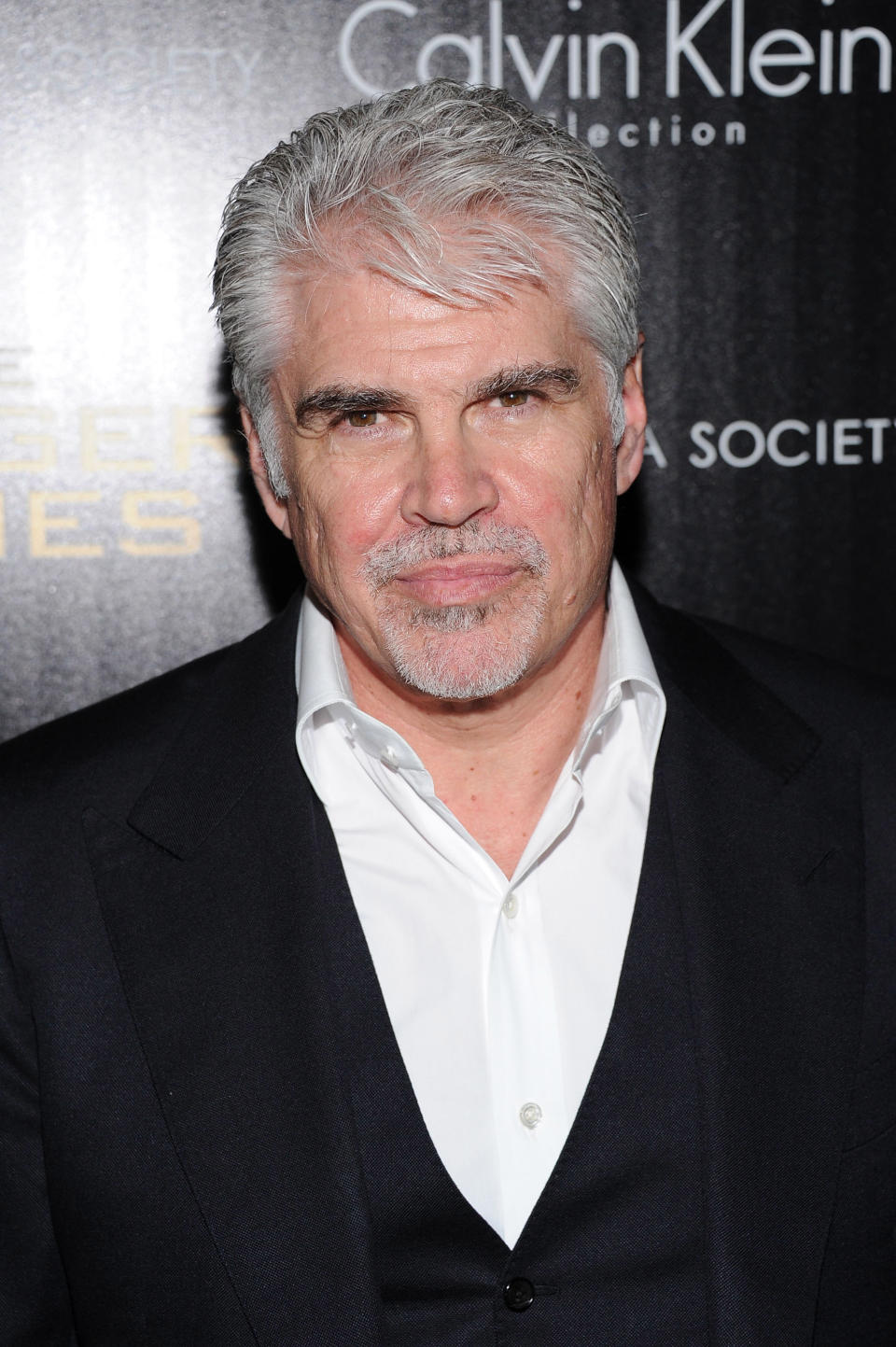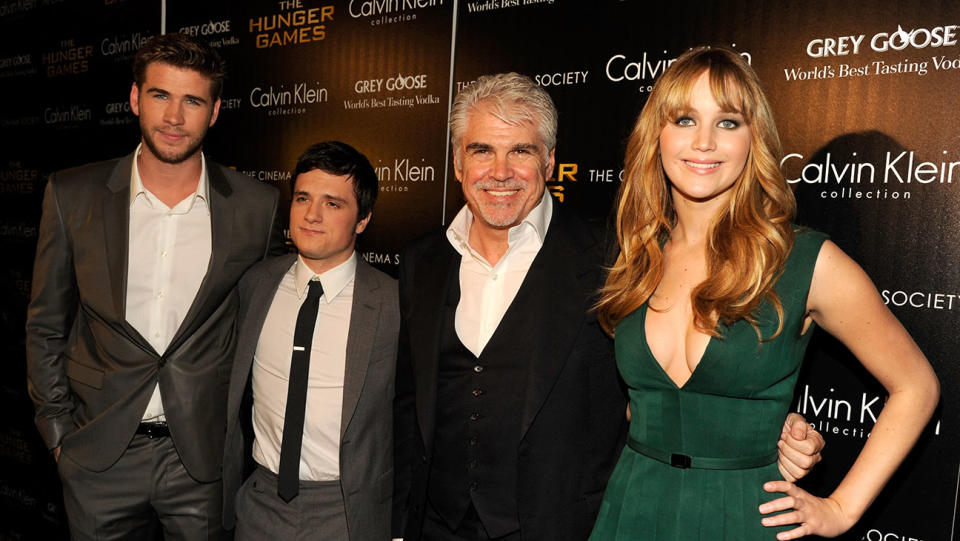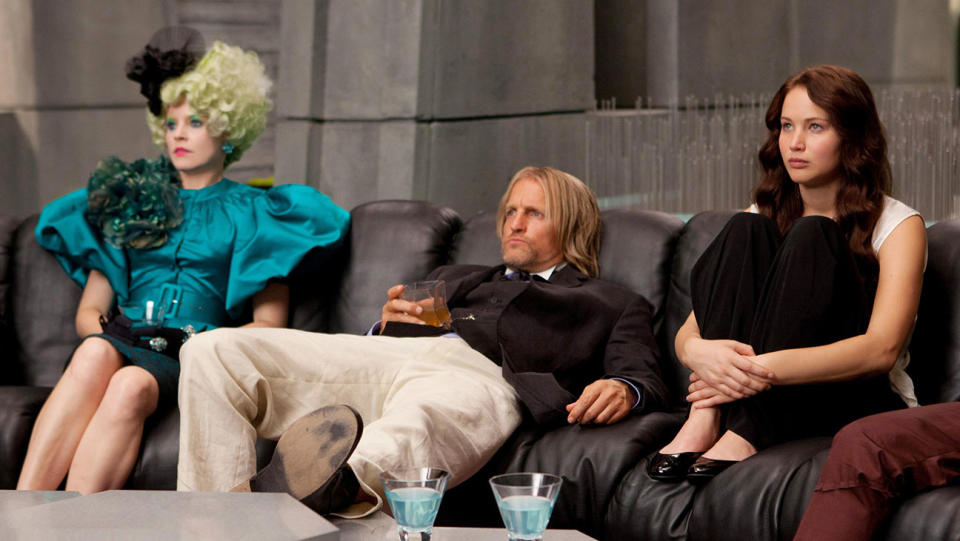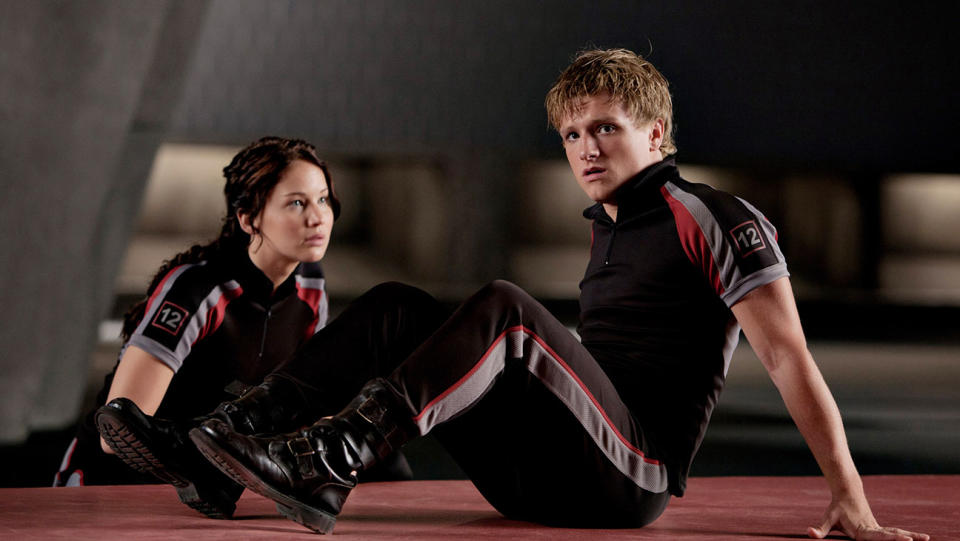‘The Hunger Games’ Turns 10: Director Gary Ross Reflects on Filming, Story’s Resonant Themes
- Oops!Something went wrong.Please try again later.
- Oops!Something went wrong.Please try again later.
- Oops!Something went wrong.Please try again later.
- Oops!Something went wrong.Please try again later.

While reading Suzanne Collins’ The Hunger Games books, director Gary Ross’ kids were hooked. Then, when giving the books a read for himself, Ross couldn’t put them down, either.
“They were riveted when they read it, so I knew about it already. My agent told me they were making a movie of it, so I started reading around 10 o’clock one night and finished without stopping,” Ross tells The Hollywood Reporter via email.
More from The Hollywood Reporter
Berlin: Morgan Freeman, Josh Hutcherson to Lead Time-Bending Sci-Fi Thriller '57 Seconds'
Making of 'Don't Look Up': How Adam McKay Created a Film He Had Been Thinking About For Years
After completing the book, Ross says he called his agent the next morning to express interest in directing what was bound to become an anticipated film. Collins’ best-selling series spent more than 260 consecutive weeks on the New York Times best-seller list and has sold more than 100 million copies worldwide.
Though on the surface, the story can be viewed as an action-packed tale, underneath lies a “harrowing premise” and “intimate emotional truth” that Ross says piqued his interest in directing the film in the first place. “I think one reason this franchise was so successful is that this generation feels they are fighting for their survival all the time — and that survival is far from certain,” he says.
Released in theaters on March 23, 2012, Lionsgate’s The Hunger Games was the first of an eventual four-film franchise based on Collins’ best-selling trilogy — The Hunger Games (2008), Catching Fire (2009) and Mockingjay (2010) — set in the dystopian world of Panem, where one male and female between the ages of 12 and 18 from each of the 12 districts must compete in the annual Hunger Games competition. The “tributes” must fight to the death to be the last one standing in a spectacle broadcasted live for the wealthy Capitol residents. The story follows District 12 tribute Katniss Everdeen (Jennifer Lawrence), who volunteers to take the place of her sister and compete.
In its debut, the film opened to $155 million at the domestic box office, with actors Lawrence, Josh Hutcherson and Liam Hemsworth quickly ascending to superstardom and the franchise paving a path for future dystopian series adaptations The Maze Runner and Divergent. A decade after the first film’s release, Lionsgate is set to return to the Hunger Games world with an adaptation of Collins’ Hunger Games prequel, The Ballad of Songbirds and Snakes.
Ahead of The Hunger Games’ 10th anniversary, Ross reflects on bringing the book to life onscreen, finding the film’s star-studded cast, deciding not to direct the sequel and how the film’s themes are more resonant than ever.

Dimitrios Kambouris/Getty Images
For starters, I was hoping you could take me back to what you thought when you first heard about The Hunger Games being in development — what made you want to board this?
I had heard about the book from my kids. They were riveted when they read it, so I knew about it already. My agent told me they were making a movie of it, so I started reading around 10 o’clock one night and finished without stopping. Then I called her the next morning, telling her that I wanted to do it.
In your conversations with Suzanne Collins about adapting this book for the screen, was there any insight or angle that she offered that helped shape or reshape your approach to directing the film?
There were so many conversations with Suzanne that it’s hard to narrow down to a single thing. One thing I found fascinating was how steeped she was in Roman history and how much of this came from the Roman arena and how she was informed by that. She was exploring how a culture devolves into spectacle and Rome was her starting point. I found that really interesting.
The book is chronicled in the first-person point of view of Katniss. Can you explain how you approached translating that perspective and preserving that first-person subjectivity?
That was probably the biggest decision, directorially: staying in that very subjective, first-person narrative. A first-person point of view doesn’t literally mean a POV shot. It means restricting the information that the audience has so they never know more than the protagonist — at least until you want them to. You restrict that context. In this case, it was staying with Jennifer and never leaving her perspective, which hopefully creates the tension that is the engine in the film.
By directing the first film, you made decisions that influenced the entire franchise, most obviously with casting. In particular, when it came to finding and selecting Jennifer Lawrence, Josh Hutcherson and Liam Hemsworth, can you reflect on their auditions and what about each of them ultimately made them the fit for their characters’ larger journey?
Honestly, I had a real sense of who I wanted before the auditions, but because it was a huge franchise the studio wanted everyone to read, which was fine. It was fun, actually. Jennifer blew the doors off the place. Josh was pitch-perfect. I had no idea that Liam wasn’t American until I talked to him when the reading was over. They were all just great. These were honestly easy decisions for me.

Kevin Mazur/WireImage
Castmembers like Stanley Tucci, Donald Sutherland, Woody Harrelson, Elizabeth Banks and Lenny Kravitz all portrayed characters also pivotal to the story. Are there any moments you can recall during the casting process or filming when you personally realized that they fully — both physically and thematically — embodied each of the character’s signature voice and message?
Loads. I had just worked with Stanley on an animated movie and I happened to be seated near him at an Italian restaurant on New Year’s Eve. I said, “Stanley, I have a great part for you, I think.” He said, “Terrific, I’ll do it.” I said, “Don’t you want to know what it is?” He said, “Nah, I trust you.” He was kidding, of course, but he’s a wonderfully enthusiastic fellow. Woody actually passed on the part at first and I had to call him up to talk him into it. He still thanks me all the time, when really, I should be thanking him — he was so great in the role.
With Donald — and it’s a pretty well-known story by now — he wrote me a letter eloquently stating what his character meant to the narrative. I was so knocked out by it I said, “Well shit, that has to be in the movie.” We were shooting by a lake and I took a folding chair down to the water and wrote two scenes immediately informed by that letter. They’re both in the final film pretty much unchanged.

Lionsgate/Courtesy Everett Collection
When reading the book, it’s clear how much detail there is around the game’s settings. What element of the games from the book was the most challenging to adapt?
In terms of the adaptation, it was a similar challenge to the shooting style: How do you stay in this character’s head? How do you see the world completely through her eyes and feel what she’s feeling? I don’t think I’d ever seen a narrative that demanded more of a first-person perspective, so that was the challenge.
An iconic moment from the book and film is the lullaby. How did you work with the composer and Suzanne on shaping the song and sound that was pivotal to the story and soul of the movie that hadn’t fully existed yet?
T Bone Burnett actually wrote that lullaby. The words are Suzanne’s, so he just took the lyrics from the book and set them to music. He recorded a woman singing it and played it for me and I believe I just said, “Thank you.”
The YA genre is at times deemed less serious given its younger audience, yet it’s a genre that’s unafraid of exploring the harsh realities around growing up. Given The Hunger Games’ storyline and its younger characters, what kind of conversations did you have with the studio around adapting and maintaining the gravity and reality of the book’s more violent themes and world for the film’s younger audience?
Great question. I knew from the beginning that this was such a harrowing premise, there was no need to be lurid or excessively graphic with the violence. An audience brings so much to these moments that overdoing them would actually dissipate the tension. But the deeper question here is about taking the themes in the movie seriously. I think one reason this franchise was so successful is that this generation feels they are fighting for their survival all the time — and that survival is far from certain. From climate change, to authoritarianism, their generation feels a real sense of dread and jeopardy. Suzanne’s book spoke that and it resonated. It’s one the reasons I wanted to do it.
One of the most prominent characters is Rue (portrayed by Amandla Stenberg), and her death is the catalyst for Katniss and the revolution — a moment in the film that in 2020, in particular, took on another very real layer. When you were producing that scene around her death and Katniss’ memorialization of her body, what discussions were you having with your creative team about what you wanted Rue’s physical death and Katniss’ memorialization of her body and life to say?
Jennifer and I talked about it a lot. I really wanted the film to pause at that moment and honor this girl — to observe her life. And by interrupting the rhythm of the movie and pausing to observe this memorial, you are saying something about the value of a human life. It’s not a game, and we will stop this game in order to honor her.
The Hunger Games‘ 10th anniversary comes at a time when we’ve seen across the globe massive resistance to oppressive governments or institutions, and many — especially the younger generations — calling for justice, change and unity. What did you hope people took away when the film was first released, what if anything did you notice they didn’t quite grasp from your vision and have you seen the audience response change over time around the story?
I think, sadly, the themes in this movie are only more resonant now than when we made it. When Donald talks about manipulating the masses through false hope, it’s more chilling now than it was then. The carnival/reality-show version of truth that ultimately crumbles around them is actually pretty prescient. As Dr. King said: “No lie can live forever. Truth crushed to Earth shall rise again.”

Lionsgate/Courtesy Everett Collection
You had planned to direct the Catching Fire sequel but ultimately did not direct the film. Can you talk about why you decided to step away?
Well, it was a very hard decision. I think what people didn’t realize is that I had two jobs. I wrote and I directed, and you do one of those things before you do the other. There was honestly no time to do both well in the three and a half months between movies, so I moved on. I got to make Free State of Jones, which not many people saw but remains one of my favorite pieces of work, so — all good.
When looking back on your experience filming, what were the biggest lessons you learned about adapting a franchise of this scale, and what are you the most proud of in terms of working on the film that you may have taken with you to future projects?
I think I learned that scale is no substitute for the intimate emotional truth that sustains any narrative. I learned that the strength and power of Jennifer’s performance is bigger than any visual effect — and a tentpole is great, but what’s inside that tent? That’s the lesson I take away from it. I’m very proud that we violated some paradigms and ultimately made a very intimate film.
Interview edited for length and clarity.
Best of The Hollywood Reporter

